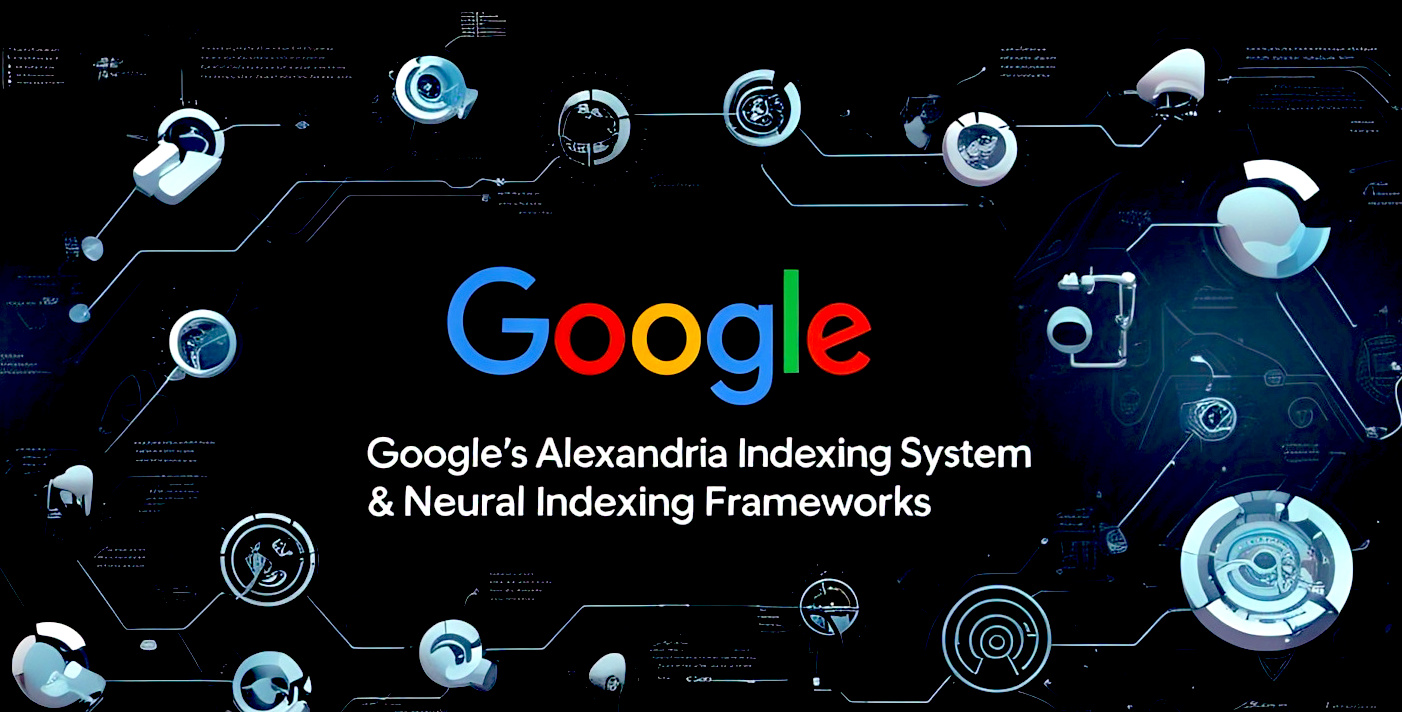
Introduction
Search is no longer just about crawling and matching keywords. As Google evolves into an AI-first company, its search infrastructure has undergone a massive overhaul. In 2025, the transformation is centered around two core concepts: Alexandria, Google’s intelligent, tiered indexing system, and neural indexing frameworks, which embed documents and queries in a shared semantic space.
These technologies are redefining how content is discovered, stored, reprocessed, and ultimately ranked. This post unpacks everything you need to know to future-proof your content and technical architecture.
Part 1: What Is Google’s Alexandria Indexing System?
The Origins of Alexandria
Internally codenamed “Alexandria”, this system was designed to replace legacy crawl-and-refresh cycles with a selective, semantic, resource-aware indexing engine. The name evokes the ancient Library of Alexandria—aiming to store the world’s knowledge but with intelligence on what matters, when to refresh, and why to keep or discard a page.
Part 2: Google’s Neural Indexing Frameworks
Alexandria is the “where” and “how” of indexing. Neural indexing is the “what” and “why.”
What Is Neural Indexing?
Neural indexing frameworks use dense vector embeddings to represent the meaning of documents and queries. Rather than relying on exact keyword matches, neural models understand intent, semantic proximity, and conceptual relevance.
This framework moves us from:
Classic: Inverted Index → Token Matching
To:
Modern: Neural Embeddings → Semantic RetrievalKey Neural Indexing Models (Google Research)
Dual Encoder Models (e.g., DPR, ColBERT)
- Encode documents and queries separately.
- Enable fast ANN (Approximate Nearest Neighbor) search.
- Power semantic document retrieval at scale.
Neural Corpus Indexer (NCI)
- Sequence-to-sequence transformer model.
- Takes a query and directly generates relevant document IDs.
- Trained end-to-end on query → doc click data.
End-to-End Hierarchical Indexing (EHI)
- Jointly learns document embeddings and an indexing tree.
- Optimized for fast retrieval and hierarchical cluster understanding.
Dense Retriever Fine-Tuned on Human Feedback
- Reinforcement learning with human feedback (RLHF) improves intent matching.
- Likely plays a role in AI Overviews and SGE (Search Generative Experience).
Part 3: How Alexandria + Neural Indexing Work Together
This fusion allows Google to:
- Only crawl/index pages that show semantic value or intent match potential.
- Deprioritize low-performing or irrelevant pages without manual deindexing.
- Create neural topic hubs for AI-driven overviews and snapshots.
- Dynamically refresh index segments based on trending embeddings.
Part 4: Implications for SEO (2025 and Beyond)
A. Content Must Be Entity-Rich and Contextual
- Tie your content to real-world entities (brands, topics, people, places).
- Use schema.org, Wikidata, and structured definitions.
- Match the intent embedding of common search queries in your niche.
B. Internal Linking Must Match Semantic Clusters
- Build Topical Clusters and Entity Silos using contextual anchor text.
- Interlink pages that share semantic vector proximity.
- Avoid “random” linking — it dilutes IRW and crawl token efficiency.
C. Content Maintenance Matters
- Update existing content frequently: even minor edits boost IRW.
- Add fresh examples, semantic FAQs, updated statistics.
- Track crawl logs to identify pages falling into Tier 2 or Tier X.
Part 5: Key Research Papers on Neural Indexing (Google & Industry)
Here are some key technical papers from Google DeepMind Research, Google Search Central , Google Research and other top labs explaining how these neural systems work:
- Neural Corpus Indexer (Google Research)
- End-to-End Neural Retrieval with Hierarchical Indexing (EHI, Google)
- Dense Retriever Fine-Tuned with Human Feedback
- ColBERT v2: Efficient and Effective Retrieval with Late Interaction
- PaLM & Gemini Language Model Papers (Power Google’s understanding layers within Search and AI Overviews)
Google‘s shift to Alexandria and neural indexing frameworks represents a profound transformation of the search engine paradigm. Understanding and optimizing for this new ecosystem means aligning with AI-based content evaluation, tiered index prioritization, and vector-level semantic linking.
The days of keyword stuffing and mechanical backlinking are long gone. What matters now is context, intent, meaning, and performance—across every layer of your web presence.
If your website, content, and technical stack aren’t ready for this wave, you’re already falling behind.
Author
Umair Khalid is a multi-disciplinary digital strategist, SEO technologist, and AI marketing advisor. He combines algorithmic knowledge, content architecture, and growth frameworks to help brands dominate in the age of AI-powered search. Explore more at umairkhalid.com